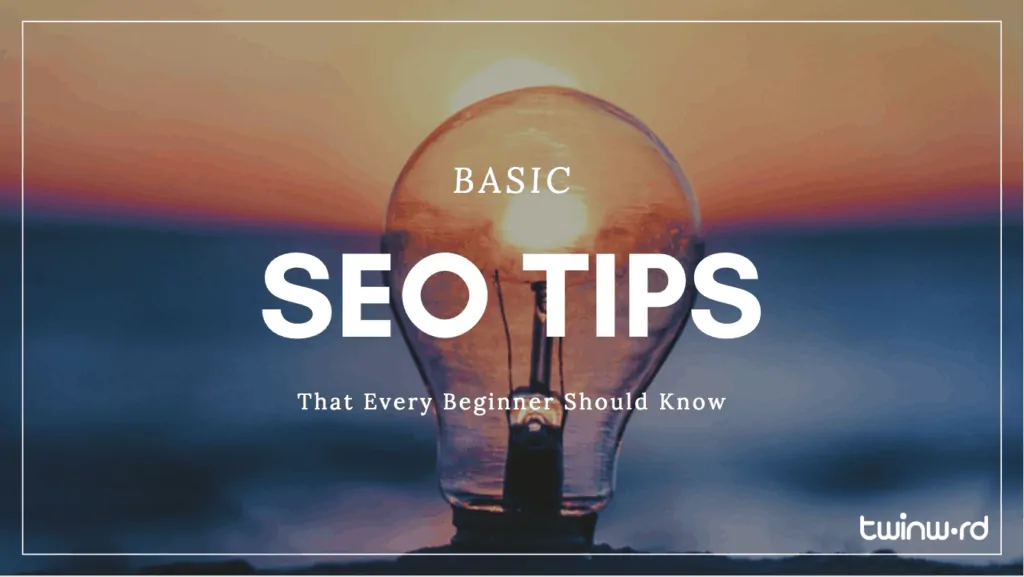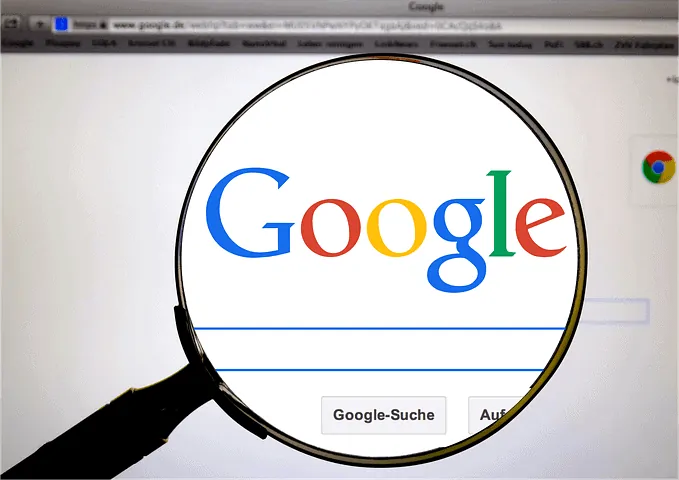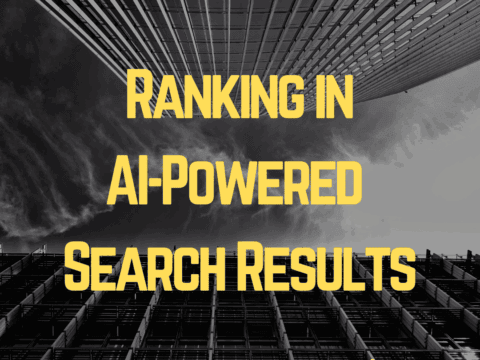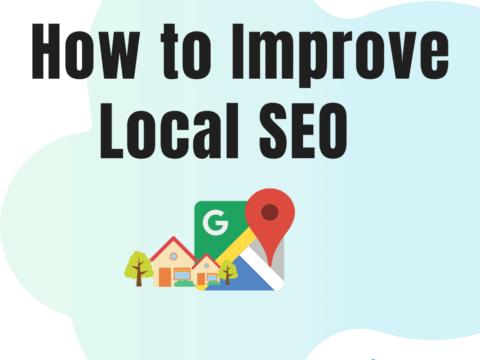
Are you new to SEO (search engine optimization) and don’t really know where to start? Don’t worry, even with basic SEO tactics you can improve your ranking significantly. We’ve got you covered with these top basic SEO tips for beginners.
What Is SEO And Why Do I Need It?
Let’s quickly cover this point. SEO stands for search engine optimization and is supposed to ensure that your website and content have the best chances to rank high on the search engine result page (SERP). Simply said, it means that you want to optimize your website and content in a way so that search engines such as Google can understand what your website and content is about so that it can rank them high for specific keywords.
Why you need this? Well, do you ever go further than the second or third page on Google’s result page? No? That’s your answer right there.
The higher your website and content rank on Google, the more people will click on it. Accordingly, the more sales or conversions you will likely get. Sounds great, doesn’t it?
Then let’s get right into the basic SEO tips:
- Write longer posts
- Produce fresh content
- Use keywords
- Optimize your title, meta description, and headings
- Optimize your URLs
- Hunt for backlinks
- Link to others
- Link to yourself
- Optimize your images
- Avoid Flash
- Optimize your social media
- Consider site speed
- Make your website mobile-friendly
- Create a sitemap
- Create a robots.txt file
- Measure your results
- Think about your users
1. Write Longer Posts

According to SEO ranking factors for 2017, content is still a very important factor in SEO ranking next to other factors like backlinks and RankBrain. But, ultimately it is content in the form of blog posts or videos that attracts users and customers in the first step of the acquisition funnel.
From an SEO point of view, longer content is more powerful as it includes more keywords and also provides more information that is beneficial to the user. Neil Patel mentioned that content should be longer than 2,000 words while at the same time being of high quality. The quality of your content is very important because users look for unique and interesting content that they find worth sharing. So, if you want users to actually be interested in your content, it has to be of high-quality.
Longer blog posts also help with dwell time. Dwell time is the amount of time that passes before a user returns back to the search engine results page. Longer content that is engaging and high in quality will make people stay longer on your website and read more. At the same time, longer dwell time is very beneficial for your ranking because it is a sign for Google that people enjoy your content.
2. Fresh Content

Next to longer posts, you also want to be aware that Google loves fresh content. This is not only because fresh content is more relevant to users, but it also lets Google know that you are still active.
This being said, we all know how difficult it is to constantly produce new high-quality content. So, instead of coming up with new super awesome high-quality posts all the time, you can make use of your already existing content.
One easy tip is that you can update one of your popular but older posts. Simply add some current and relevant information and re-publish the post with the current date. A perfect opportunity for this basic SEO technique is the posts that have a year in their title. A good example would be “Best SEO Tips 2018”. Blog posts like that can be updated super easily by adding some relevant information and changing the title to “Best SEO Tips 2019”. Don’t forget to re-publish the post with a current date.
There are many other ways to repurpose your existing content. Find out more about easy ways to reach your content marketing goals without generating new content.
3. Use Keywords

Using the right keywords is essential! While you need to use the right keywords that properly define what your content is about, you also need to consider what your users and potential customers are looking for.
The keywords you want to use should be relevant to your content’s topic so that search engines can index your website correctly. You probably don’t want to confuse search engines by focusing on keywords that are completely irrelevant to your actual products or services, or the main topic of your blog.
However, you also want to focus on keywords that your customers are actually searching for. You might rank number one for a specific keyword, but if no one is searching for that you will end up with zero people visiting your site. It is like selling a product that no one asked for and no one actually wants.
There are several keyword tools out there that can help you to find out what your users and customers are searching for. Just to name a few, you can use our own keyword tool Twinword Ideas which has several smart filters that help you to find the best keywords super fast, or, you can check out tools such as Ubersuggest or Kwfinder.
What you should look for are key indicators such as search volume (average monthly searches) and competition scores that show how easy or difficult it is to rank for a specific keyword. Of course, keep in mind that the keywords need to be relevant to your website, product or service.
Additionally, you can use long-tail keywords and LSI keywords to improve your site’s ranking and to give more information to search engines so that they can figure out what your content is about.
Long-tail keywords are terms that are more specific. If you use more specific keywords in your content or your website you increase the likelihood to receive more qualified visitors to your site.
LSI keywords (latent semantic indexing) are keywords that are related to your primary keyword. They are not synonyms but homonyms (similar in meaning), and will help search engines to understand what your content is about.
Long-Tail Keywords
Long-tail keywords are keywords like “best hiking backpack for women”. They usually contain four or more words that clearly specify what the consumer is looking for and/or their intent.
As mentioned, if your keywords are very specific you might get less traffic but more visitors that are looking exactly for what you offer and are therefore more likely to purchase. Quality over quantity, so to say. Also, it is usually easier to rank for very specific keywords as less websites are targeting them. So, why not give it a try?
LSI Keywords
LSI stands for latent semantic indexing and simply means keywords that are related to the topic that your page is about. Including LSI keywords in your content will help Google and other search engines better understand your relevance to a topic.
You want to include LSI keywords because more and more search engines are looking for more of a topic match instead of a keyword match when returning search results. And how they do that is by looking for LSI keywords.
The idea is that when writing about a specific topic, you would naturally include related words. Say for example, if you have a SEO consulting agency you would naturally include the following related words on your website.
consultant internet marketing seo
seo marketing consultant
seo consultant company
top seo consultants
seo internet marketing expert
seo internet marketing services
These keywords are relevant and helpful for Google to extract information. With this information, search engines can make sure that your content does actually talk about the topic that you want to rank for.
Even though you technically would be using LSI keywords already just by writing your content, it doesn’t hurt to see if you might have missed a few good ones.
A good keyword tool will be able to help you find both long-tail keywords and LSI keywords.
4. Optimize The Title, Meta, Heading And Sub-Heading Tags
You already have long and high-quality content, and you are a pro at including keywords? Then what about your title, meta, heading, and sub-heading tags?
Title Tag
The title tag is the strongest on-page tag indicator and carries significant weight for your SEO ranking. In case it is your first encounter with the title tag, this is an example of how users see it:

Refer to this brief checklist to optimize your title tags:
- All titles need to be unique per page
- The length should be no more than 60 characters (space included)
- The title tag should contain target keywords
If you create a title without considering your keywords, you are missing out on ranking opportunities. The title tag should contain keywords that are relevant to the webpage and your content. This tells search engines what the website or page is about and helps it index your site according to those keywords.
Google determines the content of pages from the title tag, so make sure to accurately describe your content. Recall your own search behavior on Google. As soon as you hit “enter” or “search”, you probably skim through the first three results taking a closer look at titles. The more targeted and thrilling the title is, the higher the chances for a click.
Use modifiers in your title. Modifiers are descriptive words that are used with primary keywords. This lets search engines know to return the most relevant webpages that contain related content. Some examples of modifiers are titles that start with “how-to”, “solutions”, “best”, “guide to”, “of the year” or “review of”. You can use a keyword tool that has a pattern filter to quickly get keyword suggestions that follow those patterns.
Keep in mind to optimize your title to resonate with what users are looking for, rather than stuffing it with keywords! You can use tools to help you brainstorm the most appealing titles.
Meta Tag Or Meta Description

A meta description is the short paragraph of text (snippet of information) under the URL which is used as a preview in the search results.
The meta description should be placed in the <head> tag of your page’s HTML, and should typically be up to 160 characters long.
It is important to have a good meta description because it is what the users see when they decide whether or not to click the link to your site. Google may, or may not decide to use your description and may even alter it. Nonetheless, this is one of the places you want to pay attention to as Google will use it when trying to understand what your page is about.
You also want to include your keywords in the meta description to make it appealing to actual readers that are skimming the search engine result pages (SERP).
Headings And Sub Headings (Like This One)
Headings and subheadings are <h1>, <h2>, and <h3> HTML tags. These are the section titles or that users see on the page.
There should only be one <h1> tag per web page, and this heading should contain the main keyword your content is focusing on. Google checks these tags the same way as it checks title tags, so be ready to optimize this part of your page. Often times, content management systems (CMS) like WordPress automatically include a <h1> tag for you with the title of the page or article. In this case, there is no need to include another one.
The subheadings <h2> and <h3> should also include your target keywords.However, keep in mind to write always for the reader and use headings that help your visitors to navigate your page.
5. Optimize Your URLs
While most users will pay little attention to your URLs, they are important for your basic SEO. The best practice is to keep your URLs as simple as possible. Google wants you to have simple and readable URLs to provide a logical URL structure.
This pretty much just means that instead of numbers you should use text in your URLs and that the URL should describe what the content is about while being as short as possible. Yes, it is as easy as that. Just try to be logical and user-friendly with your URLs.
Next to that, you can use your URLs as a place to put your main keywords. Of course, no keyword stuffing allowed! Remember, as short as possible. However, putting your main keyword into your URL should be no problem.
For example, if you are writing about the best movies of all time, your URL could look something like this:
domain.com/best-movies
But, wait for a second! Don’t start changing all of your URLs now. Unless you think your current URLs have a negative impact on your site, it is better to not change URLs as it can be confusing for Google as well as for your users. Therefore, it is probably better to start optimizing your URLs for your new content.
However, if you have to change your current URLs to provide a better URL structure, don’t forget to do a proper 301 (permanent) redirect.
6. Backlinks

Another very important part of basic SEO is backlinks. A backlink is when one website mentions another website by linking to it.
While backlinks are a major deciding factor that helps your website increase its rank, those backlinks should come from high-quality websites that are related to your content’s topic.
For example, if your blog is about SEO marketing you want to get backlinks from marketing related sites. Also, the quality or rather the domain ranking of the website that is giving you the backlink indicates how powerful that backlink is for you. Search engines think that the more relevant and high-quality backlinks you have, the more useful your site must be for users.
Basically, Google sees backlinks as users voting that your content is helpful. The higher the domain ranking of a website, the more power does their backlink or “vote” has because they have established themselves as reliable sources.
High-quality backlinks should be one of your main basic SEO priorities because it can easily skyrocket your ranking. With backlink tools, you can easily get started and hunt down some of those precious backlinks.
Read more about how backlinks affect your SEO ranking.
7. Link To Others
Outbound links are links on your website that point to other domains. An example of an outbound link is this example website, which you can click. When you link to other domains in your content, it helps search engines understand what your page is about. Having more related and high-quality outbound links on your website can increase your rank by having your site be recognized as trustworthy and of high quality by search engines.
Here are some things you should consider while doing outbound linking:
- Link to relevant blogs,
- No link farms (part of a private blog network),
- Avoid too many outbound links.
When you include links to other sites in your blog article, you can also try to contact those sites to let them know that you gave them a backlink. In doing so, they may find ways to include a link to your site on their page as well. Linking to other websites can be beneficial to both, you and your competitor.
Does linking to other sites help SEO?
When you link to other relevant and high-quality pages it shows Google that your content is valuable and useful for users. Hence, linking to other sites is helpful for SEO as long as you are linking to high-quality and relevant pages.
Also, the owners of those webpages you link to might check out your website and thereby generate some additional traffic for your content. As mentioned, they might even return the favor and give you a backlink in the future. You never know!
Linking to other high-quality pages certainly won’t hurt your SEO ranking as long as you don’t overdo it.
8. Link To Yourself
While it is important to receive backlinks and to link to other people, don’t forget to link to yourself.
Internal links are links that go from one webpage to another within the same domain. These links are especially useful because they allow users to navigate through a site. An example of an internal link would be linking to our own website, blog article, or our own keyword tool Twinword Ideas (see what we did there?).
Internal links can help you promote your own content and your other products or services. So, don’t pass on this opportunity!
9. Optimize Your Images
Images are an essential factor for content optimization which is why we decided to include image optimization in this basic SEO guide. We all know that visual materials such as pictures are quicker and easier to process. They simply are more appealing than endless paragraphs of text.
While images are nice for the reader of your blog, search engines can have trouble understanding images. To make it easier for search engines to index your images correctly, you can use alt text. The alt text is used within HTML code and describes what the image shows. Every image should have a detailed and accurate description in their alt text.
Next to the benefits for search engines, alt texts are also important for the blind or visually challenged as they require a special computer or software that reads text aloud. In addition, if the image is not seen or loaded your alt text will be shown and lets the reader know what the picture is supposed to show.
Last but not least, with optimized images you increase your chance to rank high on Google images, which can generate additional traffic for your website.
HTML code that includes alt text for an image should look like this: <img src=”photos.png” alt=”polaroid pictures”>. In this example, the alt text says, “polaroid pictures”.
While it is good to write your alt texts very descriptive, be careful to only include truthful descriptions and to avoid keyword stuffing.
10. Avoid Flash

Adobe Flash is an app within a web page that allows multimedia streaming and user interaction. Having Flash on your webpage can be a good and a bad thing. However, if your page is made up mostly of Flash, the page will run slower than normal and it will take time to load. Also, Flash isn’t accessible on most mobiles which neither the reader nor Google will be happy about.
Jakob Nielsen said that about 99% of websites that used Flash had lower usability and a major hindrance to good design. So, the best solution is to simply avoid using flash. There are many websites, tools, and plugins that can check if you are using Flash or not.
11. Social Media

As you probably know, social media accounts can be a powerful tool for your website and have a Facebook, Twitter, Linkedin and an Instagram account is one of the basics of promoting your website.
While social media does not directly contribute to your ranking or to SEO, it will bring you more exposure and traffic to your site which indirectly improves your ranking on Google. In other words, while social media signals are not a direct ranking factor on Google, it certainly impacts the ranking indirectly.
Therefore, don’t neglect your social media when doing basic SEO. It is best to optimize your social media posts and to distribute your content among your channels. With some easy tips and tricks, you can leverage the full power of your social media accounts to the max.
For example, you can customize your shareable links, and add a Twitter card to your website to promote your products or services.
A Twitter card (or Facebook Open Graph code) that is included in your web page will allow you to control the text and images that show up when people share a link to your page on social media. This will not only make your posts more noticeable on social media but also present your content more professionally across all your channels
There are different types of cards, but they all allow you to go over the 140-character limit and attach media screenshots when you share a post. In addition, you can see how your Twitter card looks by searching up your URL on the card validator tool.
Also, don’t forget those keywords and hashtags! We already talked about keywords for your titles, meta description, content, and, and, and. But don’t make the mistake to neglect keywords in your social media content and hashtags. Same rules apply, they should be relevant to your content and its best when they have a high search volume that indicates that people are actually searching for those keywords.
A keyword tool can help you find that search data. However, beware of keyword stuffing and only include keywords where it makes sense and is natural.
A tool that can help you keep track of multiple social media accounts is called Hootsuite. Through this tool, you can manage different social media accounts on one single platform.
12. Site Speed

Site speed is a very important factor that search engines look for when ranking websites. Google itself said that page loading speed is an SEO ranking signal, and MunchWeb found that 75% of users would not re-visit websites that took longer than 4 seconds to load.
If you want to know your website’s load speed, you can use Google’s PageSpeed Insights or GTMetrix to check. Those tools will also give you great recommendations on how to speed up your site.
13. Mobile-Friendly/Responsive

What does it mean to be mobile friendly? It means that the website or webpage is responsive or adaptive to mobile devices. Sometimes if the webpage is not responsive, there will be a separate mobile website (eg. “m.mywebsite.com”). In 2015, Google started penalizing websites that were not mobile-friendly. So, don’t waste any time and make your website mobile-friendly asap.
Next to Google’s penalty, it is also important to have a mobile-friendly website because nowadays most consumers browse the internet with their phones. If your site is not optimized it will lead to very bad user experience. Statistics report that in 2018, up to 52% of global website traffic comes from mobile devices.
14. Sitemap

Having a sitemap makes it easier for search engines to find and rank your webpages. Sitemaps let search engines know when changes have been made and page that they may have missed. It doesn’t hurt to have a sitemap and it also improves your basic SEO. Basically, with a sitemap, you can make sure that your pages get updated faster and that Google is able to find all of your pages.
15. Robots.txt
 Robots.txt files tell search engine web crawlers which page to include in their index and which not. For example, if you do not want a certain page or image being crawled by a bot, then you can restrict or “disallow” that bot from having access. This keeps test pages and pages not meant for users from being included in search results.
Robots.txt files tell search engine web crawlers which page to include in their index and which not. For example, if you do not want a certain page or image being crawled by a bot, then you can restrict or “disallow” that bot from having access. This keeps test pages and pages not meant for users from being included in search results.
You can make a robots.txt file from scratch but there are many tools out there that can make it for you if you do not have time. Certainly, something you should look into if you have pages that you don’t want Google to consider.
16. Measure Your Results
In order to know if your basic SEO is helping your website, you should start tracking your data. Google Analytics is a great tool that can analyze and save all your data. It doesn’t only tracks where users come from, but also how they are getting there. This tool also creates custom reports for you when analyzing your data.
Google Analytics allows you to measure the results of your webpages via real-time data. Data is shown from different channels like organic search, paid search, referrals, social media, and direct traffic.
Having Google Analytics will help you make business decisions on where you should invest your resources and it can guide you on your SEO efforts.
17. Think About Your Users
Last but not least, thinking about your users probably is the most essential basic SEO tactic.
As mentioned, there are numerous ways how you can increase traffic to your website: be it referrals, monthly email campaigns, or social shares on Facebook and so on.
While SEO is a completely different story with its own strengths and weaknesses, you can already achieve a lot with some basic SEO improvements to your website. However, the main idea of SEO in today’s digital age is putting the user first.
Always try to think about what your users are looking for, their wants and their needs. When you write content with the purpose to fulfill a need of your customers or to answer one of the questions they are having, you have the best chances that Google thinks that your content is valuable.
So, Just make sure that your content is helpful for your users and customers, and apply the basic SEO tactics we have mentioned so that you have the best chances that Google will rank you high.
Related
For more details and tips on how you can check if your site is following these tips, check out our post on How to Audit Your Website for Free. We listed some tools that might be helpful for some of these basic SEO tips there. Furthermore, check out these free site audit tools.
Was That A lot Of Information?
These are just some of the main topics for starting search engine optimization marketing. Start fixing up your webpage and compare yours before and after results. See what works best for you as all pages and industries are different. SEO has been around for quite some time and is always evolving, so make sure to keep your webpages updated.
Always keep this in mind, Google’s top goal is to provide the best experience for their users. That means the most relevant and high-quality webpages are the ones that will rank high. The tips I have listed above are signals that search engines rely on to indicate if a page is worthy and of high quality, and can, therefore, help your page to rank as high as it deserves.
Tell us your experience with your research! If you have any suggestions, questions or recommendations, feel free to leave a comment down below.
If you would like to read more on keyword research, check out these related articles:
- How To Avoid Keyword Stuffing
- How To Create Good Blog Titles
- What Is User Intent?
- What Are Long Tail Keywords?
- What Are LSI Keywords?
- What Are Backlinks And Why Do I Need Them?
- How To Audit My Website For Free






139 Comments
Awesome SEO breakdown as you need all of these for your website to rank.
The article is very informative for beginners in SEO. Thanks for writing such a wonderful article.
This blog is highly informative. It will be useful to many beginners who wish to learn SEO. Appreciate your writing. Thank You.
This blog is very informative, this article will help many beginners who want to learn SEO to keep sharing this type of article. Thank you for sharing this blog.
thanks for sharing
Love this! Thank you for sharing!
That’s really nice post. I appreciate your skills. Thanks for sharing.
Thanks for uploading such an informative content. Content about longer posts I like the most.
SEO is important for the website to rank higher on search engines and get organic results from it. I am obliged for this informative article, it will help many beginners to understand the importance of Best Free SEO Tool and these tips will help them to know how and what to work for making a website rank better. Keep sharing new updates.
Hey thank you so much for sharing this
Being a beginner in the field of digital marketing I found this very helpful.
Regards Priyanka
Thanks for Sharing! I want to thank you for this Post, with the help of this blog I got a lot of information like quick SEO optimization tips for blog. Keep Posting
Thanks a lot for sharing this amazing blog with us. The entire information is really good. Please keep sharing more blogs like this.
Thankful for this article, now some beginners will not totally start from scratch.
All the things about the basic beginners seo tips are discussed over here. This article mentions and acts as such a moving trigger. It is an article worth applauding for based on its content. I am sure many people will come to read this in future.
Thank You for sharing this blog, very informative and useful. I also find some blogs which is same as yours.
I’m impressed by these excellent tips of yours. Thanks for your time and effort in this awesome masterpiece. Good work.
great content really helped me know new aspects about the topic , looking forward to more such blogs.
Thank you very much for that!
Thank you for this informative article, it’s really helping me.
Thanks For Sharing Its Very Informative For Me
What’s up, its nice piece of writing about media print, we all
be aware of media is a impressive source of data.
Enjoyed a lot reading your article, you covered everything smoothly. This article will surely gonna help everyone to proceed with SEO. Highly appreciating your work.
Nice Article Thanks For Sharing
Thank you for this information.
good
Hello Sir,
Thank you so much for basic but important techniques, because as a beginner we don’t have to tell us about that thing, everyone tells about backlink, UR, DR, many more but no one tells about it.. and after reading that now I know this is basic but most important key factors.
Hi there it is a very great article. I learn a lot, especially beginning to understand what SEO is all about. Those tips of yours are amazing.I’ll keep those tips in mind to help me with my SEO.
Intresting post and That was an informative post. Yes, it is not possible to rank number #1 within six months with white HAT SEO activities. SEO is a long-term resulting technique. Using right techniques will take time but will deliver quality results that last long.
This is very good seo tips for search traffic i used this seo tips and got best results.
In today’s date most of people know some tricks but being an SEO lover I like to get some information from any Dubai sites because those sites have a lot of information which is good for all SEO lovers.
Thanks for sharing this valuable information. I appreciate your effort in penning this down.
Hello Denise Wilhaus, thank you for sharing this valuable post. Very well organized content and very useful. Would love to read more posts like this.
it’s a very nice article, thanks for sharing this information, which is helpful for SEO beginners, All Explained well in detail.
Thank you for sharing this information. It was useful and interesting
Now It will become increasingly hard to fool Google with keywords since its focus is on providing the user what they want.Thanks for your seo tips!
Thanks for Sharing this Blog Page. I really appreciate you for your great effort and awesome post.
Hello,
Thank you for sharing a detailed blog on SEO Tips for Beginners. I am sure this blog will definitely give a lot of clarification to the new comers in the world of SEO.
Great Tips, Thanks for the rep up!!!
Thank you for this information, I appreciate your effort, please keep us update.
wow wonderful post, I really like it very much,thank you so much for sharing.
Thank you so much for sharing the tips. Keep up the great work!
Wonderful experience gathered while I was going through your great article. Keep it up and best of luck at all times.
Or else the search engines will not rank you nicely.
Hi Thanks for this great information, Yes keywords and backlinks are useful for best site optimization and we really focused on this topic in order to give result-oriented services to visit us more details
It’s so helpful to read that you should have a readable URL without any numerals and with short keywords. My old coworker is starting a food and lifestyle blog and wants to increase her viewership and online presence. It seems like hiring a local SEO service in Miami, FL could help her blog do well.
Very nice post!
Hey,
I really like your post, thanks for sharing this and looking forward to seeing more from you.
Hi Denise,
Great article! Thanks for your wonderful article. Your article is very useful for the beginner.
Thanks for sharing the article. keep doing.
Farhana Akter
You really explained very well and very details. This information helps lots of people who are beginner and newbie in this field. Thank you for sharing this useful information.
Hi,Your article is to much informative from beginners level and almost all things you cover in your article keep it up good work and again write these kind of articles….
Thanks for this information and again thank because of this information very help me
Wonderful post thanks for share.
Such a amazing Blog
Thanks for sharing with us, really a very help full information given by you.
You made a great point about optimizing your URLs and how they can help with your ranking on search engines. My husband and I are looking for SEO services that can help his small business build on their ranking. He will keep these tips in mind as he searches for a professional service that can help him best.
The process of fetching all the web pages linked to a website. This task is performed by software, called a crawler or a spider.
Yeah, a lot of information to digest in BUT it is very informative especially to those beginners who are started to SEO.
hello! An Excellent weblog here! Also the most interesting thing is that your website loads up fast! can you suggest me some tricks so that my web site will fast as same as yours . thank you.
Hi, thanks for your comment!
There are several tools you can use to check your website speed such as Google’s ‘PageSpeed Insights’ tool which will also give you suggestions as how to improve your speed.
Next to that, it is recommended to:
– minimize your image sizes
– use PNG, JPG, or GIF images
– minimize the plugins on your website
I hope this helps!
Best regards,
Denise
Hey Denise!
Freut mich, dass du und dein Webblock so erfolgreich sind.
Liebe Grüße
Fabian
very informative posts
Thank you for another informative site. Where else could I am getting that kind of information written in such a perfect method?
I have a project that I am simply now working on,
and I have been on the look out for such information.
These SEO tips are really very helpful as it’s really helped me.SEO is also the most important part for any website and should me took care of because only if you follow a proper guideline you have maximum chances that your website gains a higher position in the search result page and this will increase your website visibility and hence more of the customers will visit your site leading to traffic. I liked reading your article.
My brother is considering starting a website so that he can start giving trumpet lessons to those who are interested. I found it interesting when you explained it is important to make sure pictures are easy for search engines to understand. I’ll be sure to mention to my brother that he should consider working with a digital marketing company if he does end up starting this business.
This blog helps me to Learn Many thing about Keywords, Dofollow links, Content writing Backlinks
Thank you so much for sharing this post. I have learned a handful of tips to put into my SEO journey. Now, I feel that, I have a better idea of what direction I am going now. Thanks again.
Thanks for your tips and your blog is very nice.This is a really important information as it is very educational and helpful for us.Waiting for your next posting.
Great read!!! Thanks for sharing such a great blog, keep sharing such a great blog that would help every SEO newcomer.
thank you twinword for giving me wonderful information
Thank you for sharing must needed information about seo tips . Your article look amazing to read . keep the good work up on writing useful article.
These tools and info is awesome for beginners..
really needed this article. i now completely understand about seo. tysm
thanks for this amazing information its very helpful article thanks so much your website look simple and very acttractive
Complete package for SEO. This is great article and I think I found the information I was looking for. Thanks!
It’s a great article. Now the digital marketing sector growing big. It’s very useful for people who are just getting started with digital marketing. Thanks for sharing this.
Thank you for sharing such a beautiful article about seo tips for beginner. I like the way you explain seo tips with detailed information which will surely help me. keep up the good work keep on writing such a great articles.
You are absolutely right, Social Media plays an important role in achieving great SEO results. Thank you for your valuable stuff.
It was my very first on this website and I really enjoyed reading some of the posts, thank you for sharing the knowledge
Well that’s Informative. Thanks for the share..
We solely think that a great impact would be…user intent as this is what could be the main factor as per the latest Rankbrain Algorithm. At last, thanks for posting…
I’ve found this information very helpful as many people can get help from your blog.I really appreciate your research and blog.Waiting for your next posting.
Your article does a great job of explaining what SEO is and how I can get much better results with some simple changes. I like that you touched on paying attention to your activity on google so that you can better understand how SEO works. My son needs to start using better habits so that his business actually starts to rank well when people search for his keywords.
Thanks . This Really Helpful for new comer.
Such a great article I have ever seen. Everyone should follow your thoughts. I really appreciate it.
good one keep it up
thanks for the information
These tips are rather basic, I was hoping something more but for a novice or an amateur this the perfect place to start gathering your knowledge about SEO.
Indeed an amazing post. Much thanks for sharing the same. Being an online marketer I agree with everything. This is really useful for beginners. Keep writing such amazing articles 🙂
Its a really informative post about SEO.
Thanks for Sharing.
twinword.com is a great structure website and It’s information also so health full for everyone. we also recommend this blog for information and surfing purposes also.
How can I increase my website speed?
Hi Hasan,
Thank you for your question. There are several tools online like Google’s PageSpeed Insights (https://developers.google.com/speed/pagespeed/insights/) that can help you identify what exactly slows down your website. General ways to improve your website speed are to optimize the size of your images and use PNG instead of other formats, to not use not too many redirects, and to optimize your code. However, I would recommend using Google’s PageSpeed Insight and to check the tool’s recommendation.
I hope this helps!
Best,
Denise
Hey, This is good. I have a WordPress blog. These tips are helpful for me. I look forward to using your techniques to optimize the site.
Great read!!! Thanks for sharing such a great read that would help every SEO newcomer.
I liked that you explained that you should measure the results. That does seem like a good thing to get a professional to help with figuring out. I know that I would want to hire a service that would be able to explain to he how they can help me.
Hello,
Thanks for sharing this post and it is informative article which is useful to all who create a website or a blog. SEO is the main important tool for the website and to make improvement by following the steps and to reach the success.
This is the SEO resource that I look to every time I have a question about what I should be doing with SEO. Thank you so much for creating this and explaining everything in a way that makes sense, even to those of us that struggle with this kind of stuff.
This is a great post. I like this topic.This site has lots of advantage.I found many interesting things from this site. It helps me in many ways.Thanks for posting this.
I have been looking around for this since long time. Thanks for the detailed and straight to the point article. It solved my problem. Please keep sharing more. Thanks.
This blog is very informative, you have done such a great thing . this article will help many beginners who want to learn SEO keep sharing this type of article.
You are so good at it, means you have beautifully delivered these tips through your blog. I really hope like this SEO blog there are more to come
Hi,
I couldn’t stop myself from commenting on this post. This article is full of knowledge and covered so much information. SEO is the heart of an online business world and everybody is trying to learn how SEO works. I find SEO very fascinating because we can do experiments with it. We can apply a try and error method in it.
Again thanks a lot for this useful information… 🙂
It’s great to come across a blog every once in a while that isn’t the same out of date rehashed material. Fantastic read
I am looking for such an informative post for a long time. Thank you for this post. Thank you for sharing your expertise. This post is very helpful. It’s informative too!
Hey.. really informative post. Came to know about many interesting things about social media here.
keep sharing
Thanks
The content of SEO is truly amazing. I have bookmarked the page. Learned something new today! and I should consider this. Thanks for sharing amazing SEO Tips for beginners.
Hi
Good afternoon
Thanks for sharing very informative and helpful article.
For beginners, I would like to recommend him/her to focus on content and optimization which matters a lot and should be given top priority. Besides that, you should start working on sitemaps and creating link building to gain ranking and generate traffic by putting the appropriate meta tags and doing LSI research on your keywords.
WOW!! This blog is really very helpful to many people. Thanks for sharing it with us and all your valuable input on this topic.
Hello,
Very nice article. I am a beginner and it’s very difficult for me to learn SEO. But with the help of your article, i can learn to blog easily.
Regards, Shubham
Great post! Very well put, and I am very excited to try some of these new tips out myself, thank you for sharing.
Worth reading. Very informative and helpful article, thanks for sharing. Kudos author 🙂
This is a great post. I check your blogs regularly but after reading this blog and I’m inspired. It is extremely helpful information 🙂 I read such information a lot, for my personal knowledge
Hi there, thanks a lot for sharing these helpful tips. I will surely put this into practice.
Making backlinks from high authority sites are very useful for your website as major search engines like Google matters a lot in backlinks although it needs to understand the ranking factor and its algorithm which are changing from time to time and updating its policies more frequently.
Great tips. Obviously, In the changing landscape of marketing and promotion, SEO has become a core element of any serious business whether big, small or medium. So this information is very useful. Thank you for sharing it.
Hey thanks. I found your blog using Google Search. This is an extremely neatly written article and very informative. These tips are important for getting organic traffic. Thanks
Hello Team,
Definitely, your Information was enough for a beginner to understand the basics of SEO. It has stated very well the factors affecting the ranking of the website. Thank you for sharing the details.
I like your tip about avoiding too many outbound links. That makes sense considering you don’t want to lower your rankings. I’ll have to consider your tips so that I can get really good at SEO.
Hi, I am a web developer and always looking for SEO related articles. Actually company team members suggested me to read this. And I found one of the best article on SEO. It would really helpful for my website rankings. Now I am aware of all the major aspects of SEO for best ranking.
Very interesting post on Basic SEO.
Awesome tips and step by step explanation. Really appreciate the way you have written and explained.
Thanks for sharing it with us. Worth reading it.
Good work..!!!
Brilliant post. !!!
I have found your tips quite amazing..!
Thanks for this wonderful article.
Keep Blogging !!
Thanks for sharing this post!! This post is very informative and very useful to all who create a website or blog.SEO is the main important thing to do for the website and who read this article and follow these steps can get success.
Detailed, Extremely Useful & much informative post. I highly appreciate it.
I wanted to shift my wordpress.com blog to a wordpress.org blog. Now I guess, I can.
Thanks a lot for sharing.
SEO is an amazing technique to get a boost in traffic of any website. Browsing through your website I learned some new things about SEO. Thanks for sharing an informative article.
Awesome post. These factors will help to increase SEO ranking and get more organic traffic to the website. SEO is getting very much complex day by day. But If we work smartly and follow the google guidelines, it will bring the best results for us. Thanks for putting top notch content. Looking forward to coming back for more informative articles.
Great article. Informative and helpful. The tips that you share in this post are really helpful for me. Thanks for the info.
I have learned some just right stuff here. Certainly, value bookmarking for revisiting. I wonder how much attempt you put to create such a
a magnificent informative web site.
Your website is excellent. Explained well in detailed, thanks for sharing the really amazing piece of content with us
Great article and very well explained. I believe in professionals so this is a very useful article for everyone. Many thanks for your share.
I would like to say thank you for what you have done. I’m a beginner in the marketing world and now I feel much more confident in e-commerce marketing
Your SEO tips are very good…. thank you
Nice post and a Great blog, I really appreciate your efforts and I will be waiting for your further write ups. Keep posting such kind of information on your blog. I bookmarked it for the continuous visit. Thanks for sharing this.
SEO is important for the website to rank higher on search engines and get organic results of it. I am obliged for this informative article, it will help many beginners to understand the importance of SEO and these tips will help them to know how and what to work for making a website rank better. Keep sharing new updates.
thanks for the information
Great and informative article! thank you for sharing it!
Hey twinword team,
I appreciate your post! Very informative and useful
I am very glad to here because this article is very much meaningful thank you, sir, for giving me the opportunity to learn.
It’s very helpful and meaningful, where founding some important things. Thank you, sir, for your nice post.
Really this is very nice blog, thanks for share.